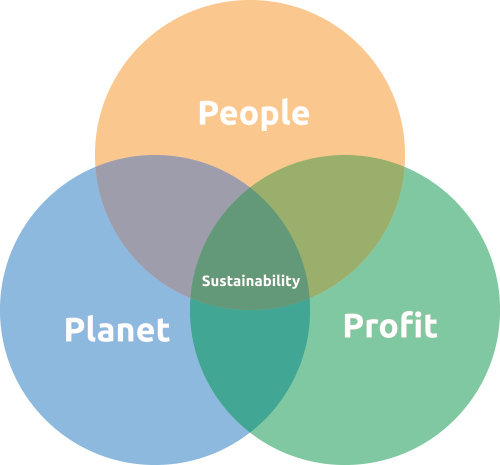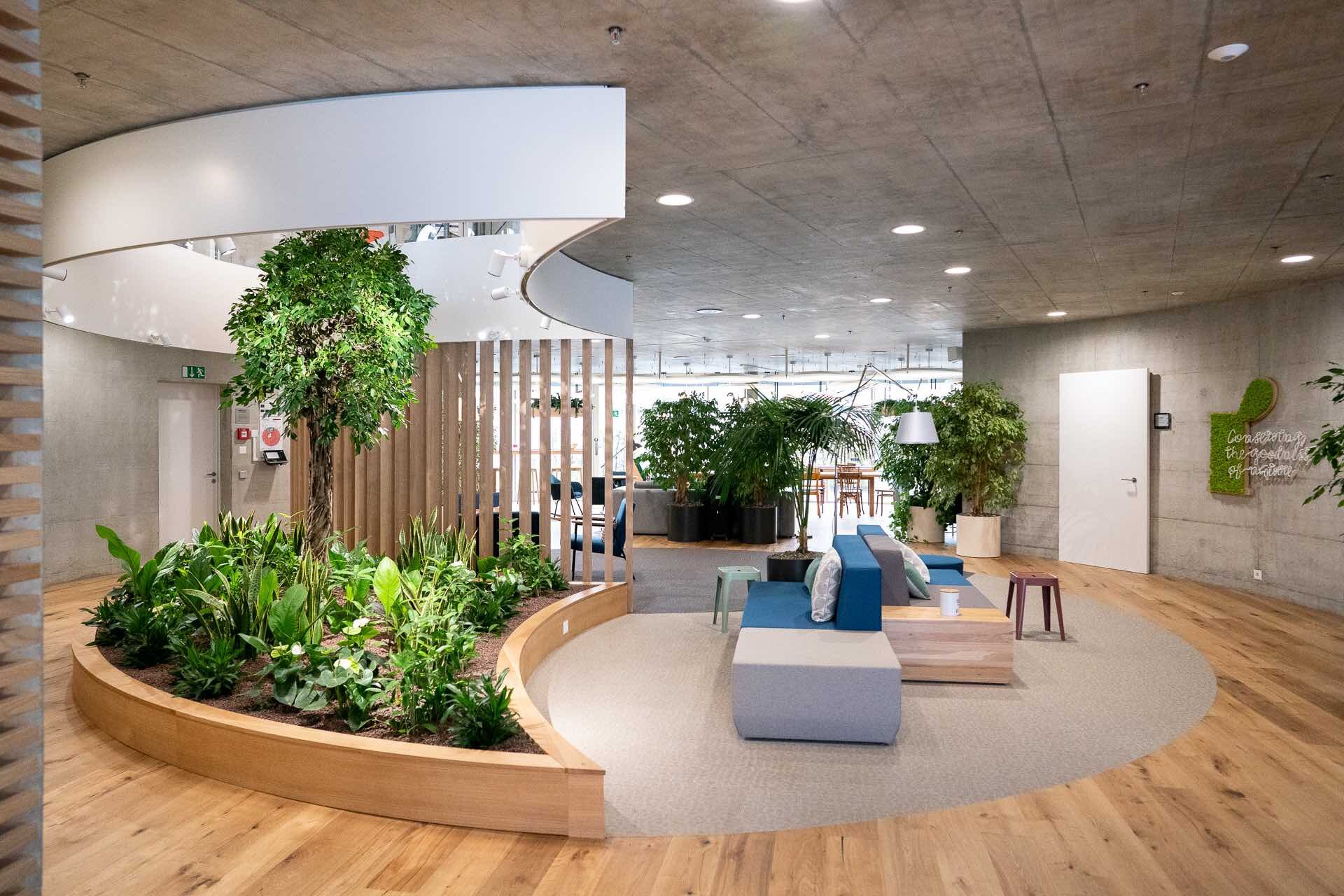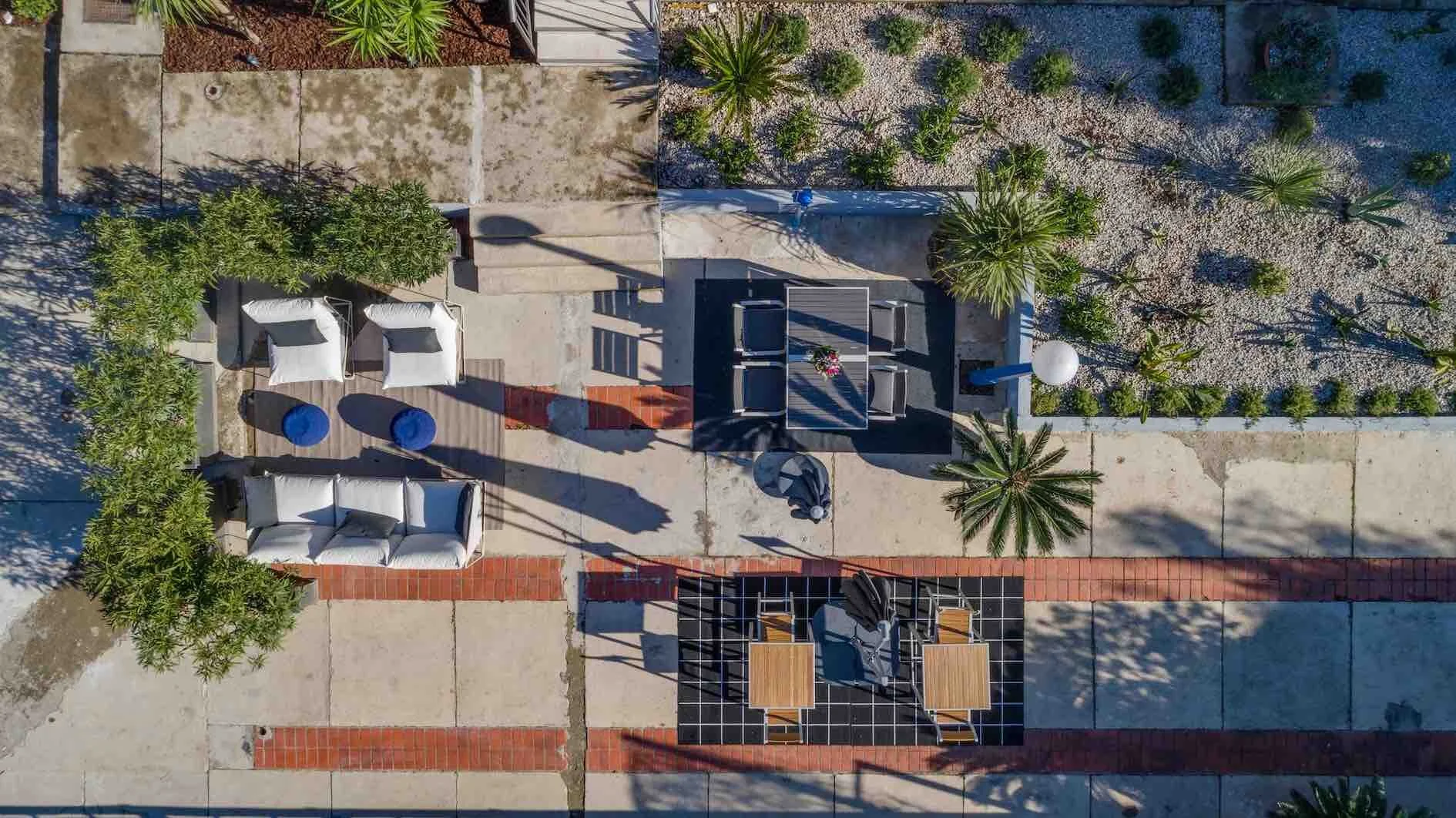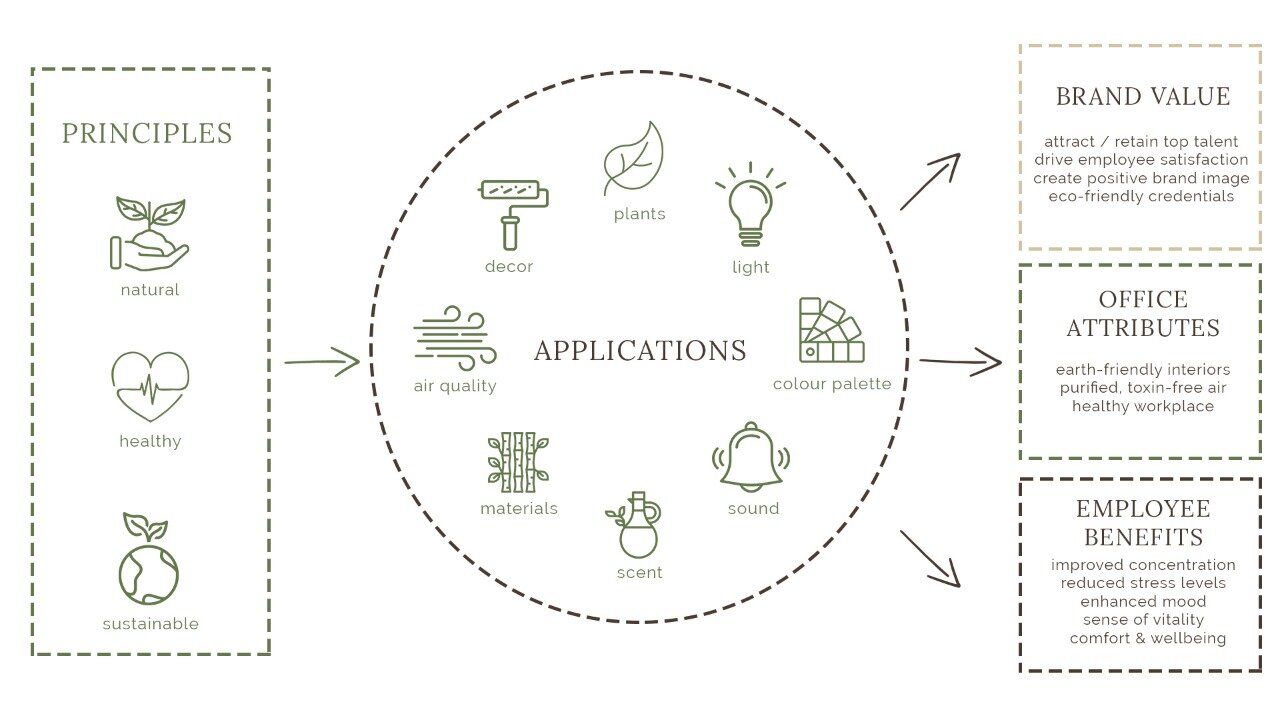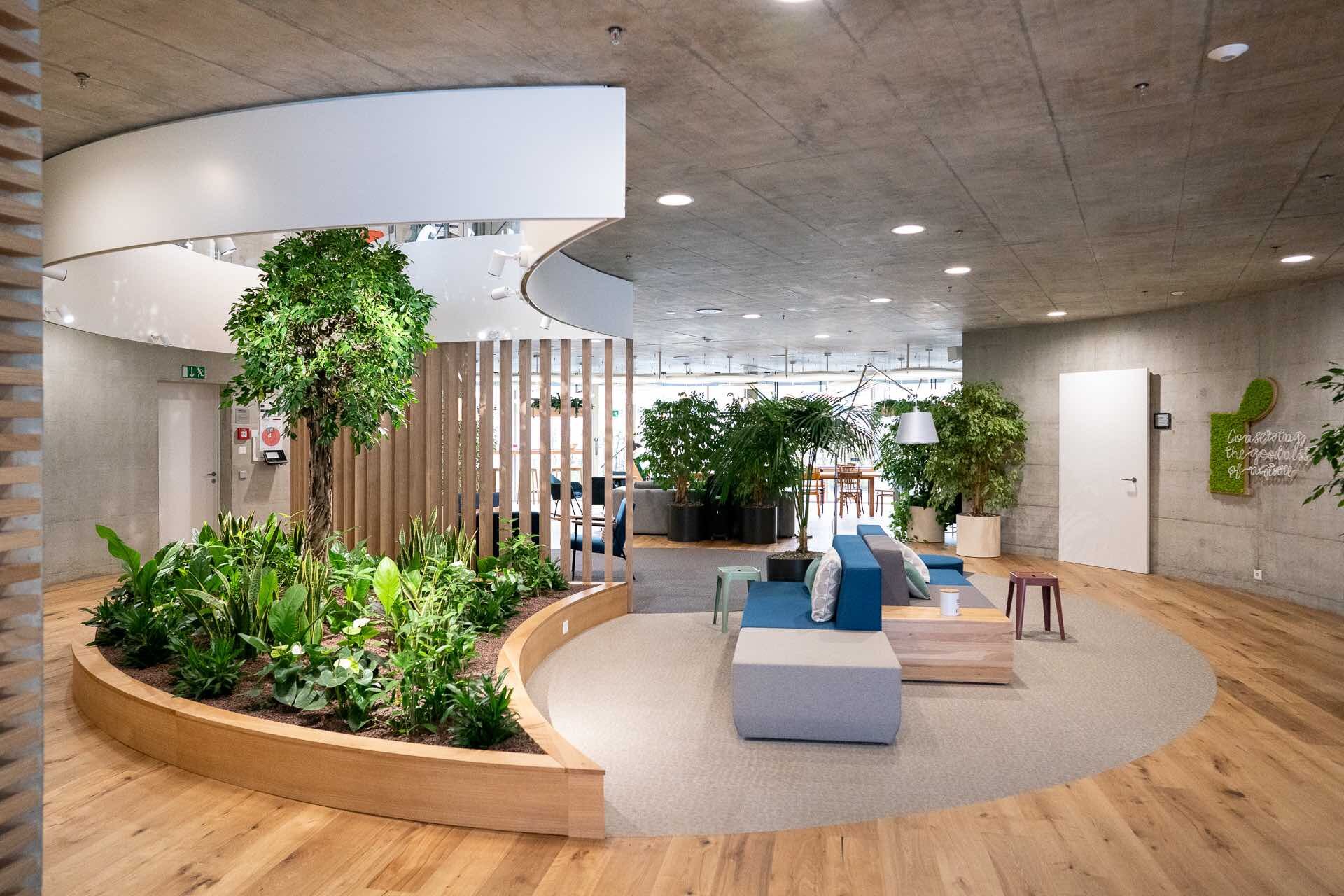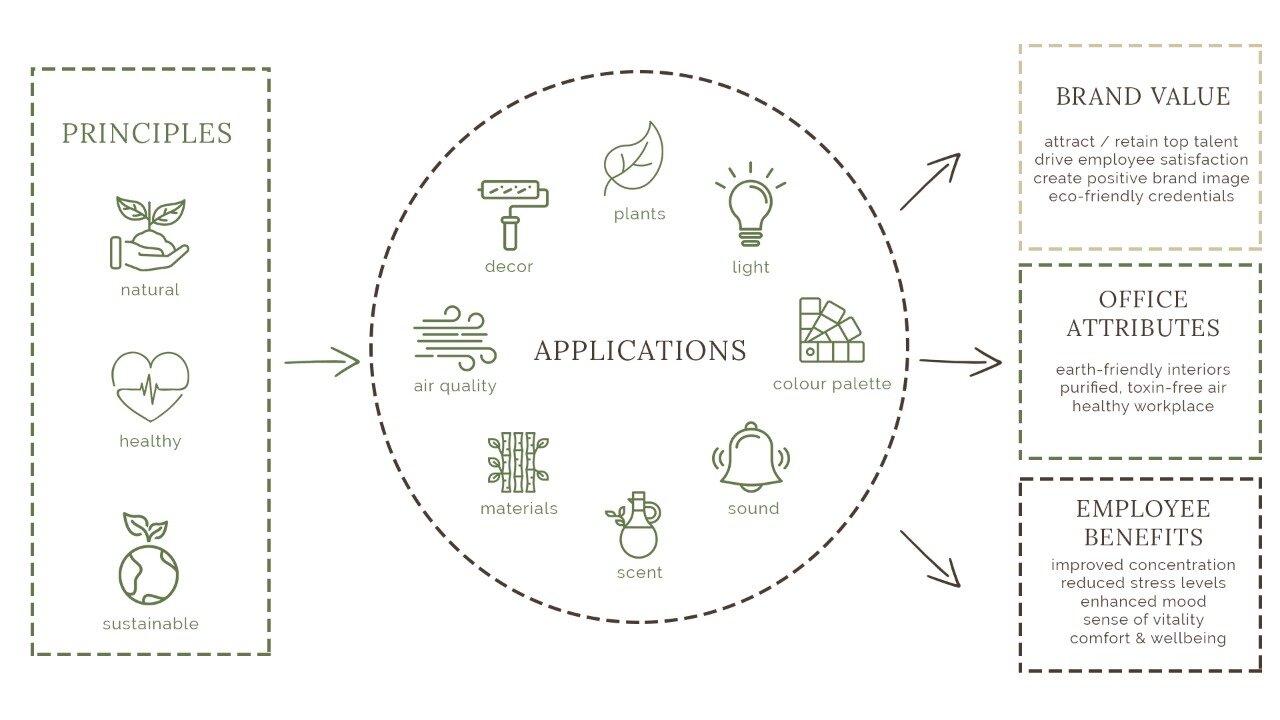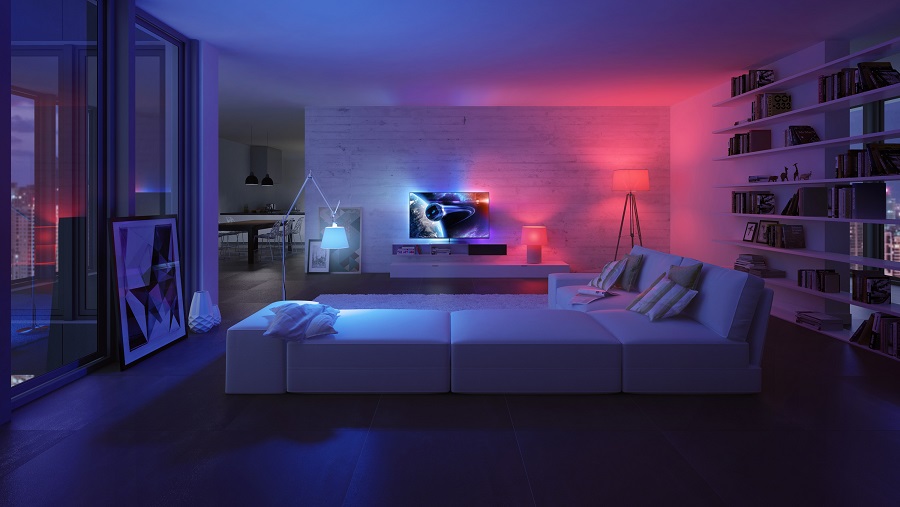Biophilic Design for People, Planet and Profit
As the world becomes increasingly urbanized, lifestyle convenience and stimuli typically increase while access to nature and green spaces decrease.
This represents a fundamental disconnect with our evolutionary history; biophilic design offers a time-proven solution to this contemporary challenge.
We define biophilia as the human love of or need for a close connection with nature and other forms of life.
When applied to modern lifestyles, ‘biophilic living’ is less about a return to hunter-gatherer times and is more to do with the respectful (re)integration of nature into our homes, offices, gyms, diets and beyond.
The last two centuries have seen a massive process of urbanization as entire populations transition from low density natural environments to heavily built metropolises with limited access to greenery, open spaces, and wildlife.
Simply put, biophilia and biophilic design are a modern response to that disconnect from nature.
It is an attempt to reunite indoor and outdoor worlds through the sensitive use of natural materials, shapes, breezes, colors, scents, and sounds in urban architecture and interiors.
THE TRIPLE BOTTOM LINE
The Triple Bottom Line (TBL) is a way of breaking down a business model by evaluating it from three different angles: human health, environmental sustainability, and financial gain - People, Planet, and Profit.
People: Measures social responsibility, what is a business doing to further the health and wellbeing of its customers, or users, and the community around it
Planet: Measures environmental impact, how is a business protecting or positively influencing the earth
Profit: Measures what is gained, and there needs to be financial gain in order for the business to survive and continue to do good for People and Planet
PEOPLE: SOCIAL RESPONSIBILITY
Only more recently has there been emphasis placed on People in terms of our built environment.
Current thinking however posits that buildings and interiors should not only be green but also healthy, actively contributing to the mental and physical wellness of its users, be they residents, office workers, patients or students
Biophilic design falls in line with this view, as people who spend time in biophilic spaces experience a plethora of benefits that extend to both physical and mental health.
Here are a few noteworthy examples:
A BIOPHILIC HOSPITAL EXPERIMENT
A 1993 study by Dr. Roger Ulrich focused on biophilic design applied to various settings, one of which was a windowless, hospital emergency room.
They traded blank walls and artificial furnishings for a design that aimed to connect people with nature through potted plants, furnishings made from natural materials, and a colorful wall mural of plants and animals in a Savannah-like setting.
The result? A significant decrease in stress and aggressive behavior among patients, as well as improved recovery speeds of 8.5% compared with those facing brick walls. Multiply that small gain out over the entire healthcare system though, and the cost savings are considerable.
Not only did the results of this study give us a glimpse of the power of a connection with nature, it showed that the positive impact can also be present when nature is indirect and merely representational.
This simple biophilic design element is a potent way to improve the hospital experience—biophilic design doesn’t have to be difficult to be powerful.
Hero offices Switzerland, Biofilico consultancy
A HEALTHY WORKPLACE
Hard evidence for the power of biophilic design in the workplace comes from a recent study undertaken by Professor of Organizational Psychology and Health Sir Cary Cooper entitled ‘Biophilic Design in the Workplace’ that surveyed a sample of 3600 office workers across Europe and the Middle-East.
The results showed that office environments incorporating natural elements such as internal green spaces, natural light and an abundance of plants ensure higher levels of employee creativity, motivation, and wellbeing.
RECHARGE ROOMS
In an era filled with high-stress jobs and tech fatigue, recharge rooms are a growing trend in workplace wellness programs. Whether presented as somewhere for stretching and yoga, a quiet room for focused bursts of concentration and productivity, as a chill-out meditation space or even a games area, recharge rooms are somewhere for workers to — you guessed it—recharge their batteries during the workday.
This can help lead to less stress, better productivity, more creativity, as well as better physical and mental health.
For more on Biofilico’s healthy office project for HERO Switzerland see this page.
PLANET: ENVIRONMENTAL IMPACT
FITWEL, standing for Facility Innovations Toward Wellness Environment Leadership, was launched in March 2017 and has currently impacted over 250,000 building occupants with over 380 projects around the world.
They take a data-driven approach with a database of over 3000 academic studies backing up their efforts to inspire healthier workplaces and residential communities specifically.
Certification systems such as the US Green Building Council’s LEED have given architects and interior designers a clear structure and format to follow, as well as increasingly prestigious ratings that add tangible value for building owners (Profit) and their occupants (People) whilst reducing the impact of buildings on the environment
Hero offices Switzerland, recharge room by Biofilico
Buildings and interiors that respect the planet, doing no harm to the environment and in some cases even giving back, are often described with terminology such as green buildings or sustainable buildings.
This approach—one that priorities concerns for nature—is literally built into the biophilic design value system. We love what nature can do for us, so we respect and protect her in return, it's a symbiotic relationship.
One key insight here is that the materials chosen for an interior space will not only influence the final ambiance but also impact the users’ health and wellness, largely by avoiding materials that off-gas harmful toxins and Volatile Organic Compounds (VOCs).
Opting for materials that are natural and sustainable will help ensure that both a room’s users and the planet stay healthy. Good materials to consider in this sense include FSC wood, bamboo, linen, cork, and ceramic.
Using organic material can lessen the presence of harmful chemicals that are regularly found in building materials and furniture—think benzene, formaldehyde, and trichloroethylene.
PROFIT: RESPONSIBLE BUSINESS
Although organic design stretches back as far as the 30s, sustainable, eco-friendly buildings, and biophilic design in particular are concepts that have been introduced into mainstream design only over the past 20 years or so.
As we have argued above however, the inspiration is simply to seek a more evolutionary concordant relationship with nature whilst living a 21st century existence.
OUTSIDE-THE-BOX GAINS: EMPLOYEE RETENTION
We’re seeing more and more biophilic design used by large companies dealing in billions of dollars of annual revenues and tens of thousands of highly qualified, highly sought-after knowledge workers, Why?
Employee satisfaction and office productivity are crucial in maintaining a competitive edge. Yes, these companies are intent on using responsible architecture and renewable energy sources but they are also exploiting the latest research that explores the intersection between neuroscience and biology.
Other examples of ‘profit’ derived from biophilic design include:
Improved productivity & creativity for staff in the workplace
Higher prices on real estate sales and hotel rooms with a view of nature
Opportunity to improve brand image through the office environment
Conclusion
While it may be instinct to devote your focus purely to profits, turning some attention toward environmental efforts and social consciousness holds an arsenal of benefits—which often includes increasing profits.
Biophilic design is a way to tap into the power of not only nature, but of the 3 P’s: People, Planet, and Profit. And in time you will find that they often overlap and feed each other to cultivate a happy, healthy, and thriving business in today’s society.
Workplace productivity and how to increase it
Workplace productivity is a measure of efficiency one employee uses to complete his tasks.
We often assume that productivity means and depends on more things getting done each day, but - the reality is a bit different and workplace productivity is important to get things done consistently, no matter what you are working on.
We could say that workplace productivity has some important variables that are crucial when work efficiency becomes critical and we get the need to increase productivity at work.
These variables made to increase productivity at work are: labour and money related, but a great part of workplace productivity-boosting tool is also the art and science of space management.
The great importance of workplace productivity
Workplace productivity helps to motivate the employee and boost morale, producing an even better company environment. When a firm is highly productive, it eventually becomes successful, and because of this, incentives are bound to be made available to the employees.
Things that affect workplace productivity are the same ones that increase it!
The good thing to know is that the things that can affect our workplace productivity are the things that can put it back on track and increase productivity at work.
A working environment is a place where employees perform their job and a place where they spend the greater part of the day. The physical environment influences their health, their work performance and productivity, as well as relationships between the colleagues.
Factors like temperature, air quality, lighting and noise conditions in the workplace affect the productivity of the workers. Other factors that affect workplace productivity are the ones we will talk next, and try to point out how we can use the same situation to improve work efficiency.
Organizational and interior factors impact on workplace productivity
How to increase productivity in the workplace?
The production of all departments should be properly planned, coordinated and controlled. The right quality of raw materials should be used for production. Authority and responsibility of every individual (staff) and department should be defined properly so conflicts can be avoided.
Personnel factors
The right individual should be selected to get a suitable job done. They should be given proper training and development, better working conditions and work environment good enough to properly motivate them. Financially, non-financially and positive incentives are also much needed.
Once screened, hired, and on the job, training is a crucial part of ensuring workplace productivity. There are a lot of skills you can help your employees develop to increase productivity at work.
The Importance of office interior design.
Office design is vital to both employees and clients/customers. Employees often spend more time in the office than they do at home. With that in mind, it makes sense that well-designed offices can increase employee morale, productivity, efficiency, and overall attitude.
A wonderfully designed office interior inspires the willingness of people who are able to operate independently - to take actions. Granting workers freedom over when, how, and where they work creates proof of their work ethic in a way that trying to control them cannot ensure.
The impact and influence of the proper decoration cannot be underestimated and they play a very important role in enhancing the mood and set a perfect ambience for any type of event or job.
For information about ergonomic furniture within a healthy office design context see our blog post here and for healthy coworking offices see here.
Attracting customers
Working with an interior designer closely in order to let them know the types of customers you want to attract so that they can design a space that will truly work for your business and target audience.
How technical and space management factors influence work productivity?
Productivity largely depends on technology. These include proper location, layout and size of the machinery, the correct design of machines and equipment, research and development, automation and computerization, etc. If the organization uses the latest technology, then its productivity will be high.
The usage of non-toxic, organic materials supports performance
Using sustainable, earth-friendly materials such as cork, FSC wood, rubber and bamboo, as well as natural patterns, colours, textures and finishes can increase work productivity. Sustainable materials also avoid unnecessary impact on the environment.
Coworking spaces possess a huge potential to support environmental sustainability due to their inherently sharing-oriented constitution. The steps taken may be large or small, with every effort adding to the whole cause makes a coworking space much enjoyable.
You may have lots of other ways to handle stress, investing in innovative, positive, healthy and appealing coworking space design is, actually achieving maximum wellbeing for office workers while keeping an eye on their performance and output.
Firm management factors
The management of the organization should be scientific, professional, future-oriented, sincere and competent. Managers should possess imagination, judgement skills and willingness to take risks for the optimum use of the available resources to get maximum output at the lowest cost.
Location factors makes going to work more enjoyable
To boost productivity also means the dependence of location factors such as infrastructure facilities, nearness to market, nearness to sources of raw materials, skilled workforce, etc.
Location decisions can have a big impact on costs and revenues. A flexible culture is great for morale, trust and job satisfaction - there's no doubt that having one is absolutely worth it.
From this viewpoint, business-friendly and economically developed locations should be considered. For instance, New York can be a beneficial location choice.
Due to its high reputation for being the desirable location for any business, the city may provide you with a variety of modern office spaces, co-working areas, and shared offices.
Among this variety of options, you can choose one of the NYC office suites for business, which is a great contribution for each successful business, as they are fully furnished with all the necessary amenities.
Whatever your business does, its location could have a huge impact on productivity flow, even if you're not a particularly goods-heavy business like restaurants and hospitality places.
The nature-inspired decor and lightning that inspires awareness
An example of a functional, healthy approach to designing a productive workplace surrounding is the use of nature-like habitats and botanical motifs when increasing productivity in the workplace.
Biophilic interior design transforms your space into a harmonious collection of natural elements that will improve your mood, boost productivity and sense of wellbeing. Our purpose is to bring nature indoors, integrating biophilic interior design into 21st-century urban living.
Biophilic design incorporates natural components such as fresh or purified air, the healing powers of herbal aromatherapy, soothing nature sounds, intelligent lighting and more to transform any space into an oasis for positivity and workplace productivity.
Office design concepts by Biofilico starts by looking for ways to introduce healthy, biophilic principles into the layout, floor plans, elevations and sections phase, often collaborating with a team of architects to evoke positive emotions in their users.
It seems like more and more companies are adopting the motto “do more with less”. So - where does that leave an employee? Scrambling to complete tight deadlines, wearing 30 different hats, answering hundreds of emails and phone calls - the point is very clear.
The goal of this post is to help you find ways for you and your team to increase productivity at work. Instead of trying to do a bunch of these at once, find a couple that you can implement right away. There’s a lot of technology being developed to help you organize your life, use your time effectively, and make your life easier.
With Biophilic design studio, your office can become a more natural, healthy and sustainable place to work in, delivering you more concentration and work efficiency due to natural decor, smart lightning that suits your mood, scent and sound that will inspire you to be more productive and have additional wellness benefits.
office interiors & outdoor workspace, porto montenegro
branding, signage and landscaping
interior styling, furniture procurement and landscaping
exterior workspace / chillout area, styling and furniture procurement
exterior workspace / chillout area, styling and furniture procurement
Benefits of Biophilic Design in Offices & Coworking Spaces
Our short explanation of the benefits of biophilic design in offices and coworking spaces (video & text versions).
Biophilic design is a technique that respectfully harnesses Mother Nature’s restorative, energizing properties for physical and mental health benefits. So, where better to implement this approach than in the workplace, where many spend eight hours a day, five days a week?
Biofilico’s method combines the three key ‘principles’ of healthy, natural, and sustainable design implemented through eight ‘applications’ for a range of externally oriented attributes (for the company in question), internally oriented benefits (for the office workers), and value generation (for the brand).
By incorporating biophilic design principles, such as natural elements like plants, green walls, water features, and natural materials like stone and timber, Biofilico aims to create work environments that induce a sense of belonging, loyalty, and well-being among employees.
Here, we address the benefits of biophilics in the workplace and how to achieve them through a series of interior design, engineering, and operational interventions.
Biophilic Design: A Scientific Foundation
Biophilic design, a term coined by Edward O. Wilson, posits that humans possess an innate affinity for nature, stemming from our evolutionary history as hunter-gatherers.
This biophilia hypothesis suggests that connecting with the natural environment can profoundly affect our psychological and physiological well-being. Scientific research has consistently supported this idea.
Numerous studies have highlighted the benefits of biophilic design elements. For instance, research published in the journal Environmental Health Perspectives found that access to natural light in the workplace improves sleep quality and reduces the incidence of sleep disturbances among employees.
Furthermore, a study in Frontiers in Psychology demonstrated that indoor plants in the office environment can enhance cognitive performance, including problem-solving and creativity.
Biofilico design case study: natural foods conglomerate global headquarters
Benefits of Biophilic Design
It's about much more than just a few houseplants
In the ever-evolving landscape of workplace design, the integration of biophilic design within architectural or interior design has emerged as a transformative approach that seeks to bring the natural world into the built environment.
This essay explores the profound benefits of biophilic design in the workplace, drawing upon scientific research, relevant theories, and case studies to elucidate how it positively impacts the well-being and productivity of employees.
Additionally, it will discuss the various elements of biophilic design and how they can be effectively applied in office spaces designed for sustainability and occupant well-being.
Boosting Productivity and Well-being
The workplace is an arena where employee well-being and productivity are inextricably linked. Biophilic design offers a multifaceted approach to enhance both.
Introducing plants and biophilic design in the office environment can significantly improve air quality. Plants absorb pollutants, toxins, and airborne microbes, remove harmful volatile organic compounds in paint, carpet, and furniture, and release water vapor into the air, reducing employees' chances of getting sick and improving overall well-being.
Natural elements, such as greenery, natural light, and views of nature, have been shown to reduce stress levels, increase job satisfaction, and foster a sense of connection with the environment.
The Amazon Spheres in Seattle, a workspace constructed with abundant plant life and biophilic elements, has garnered attention for its positive impact on employee well-being.
Studies conducted by the University of Oregon revealed that employees in this environment reported higher levels of creativity and workplace satisfaction. This case exemplifies how biophilic design can create a nurturing and inspiring workplace.
Enhancing Mental Health
Biophilic design promotes mental well-being in the workplace by reducing stress, anxiety, and fatigue among employees. Access to natural elements like plants, daylight, and outdoor views can calm individuals, leading to improved mood and overall psychological health.
Additionally, incorporating fresh air into the workplace can significantly enhance mental well-being by reducing stress, increasing productivity, and improving air quality.
Facilitating Social Interaction
Biophilic design encourages employee social interaction and collaboration, fostering a sense of community and camaraderie in the workplace. Spaces designed with biophilic elements such as greenery and communal gathering areas create informal interactions and idea-sharing opportunities, strengthening team dynamics and relationships.
Incorporating biophilic principles into outdoor spaces such as balconies, terraces, and rooftop spaces ensures abundant natural light and exterior landscape views, further promoting social interaction.
Increasing Cognitive Function
Biophilic design enhances cognitive function and performance in the workplace by providing environments that stimulate creativity, focus, and problem-solving skills. Exposure to natural elements has been linked to improved concentration, memory retention, and task performance, ultimately boosting employee productivity and efficiency.
Combining natural materials in biophilic design can enhance cognitive function by creating more engaging and stimulating environments.
Supporting Physical Health
In addition to mental well-being, biophilic design contributes to physical health in the workplace by promoting movement, relaxation, and overall vitality. Incorporating biophilic materials, ergonomic furniture, and access to outdoor spaces encourages physical activity, reduces sedentary behavior, and supports employee health and wellness.
Natural lighting enhances physical health by regulating sleep-wake cycles, improving overall well-being, and boosting productivity.
Sustainable Practices
Biophilic design aligns with sustainable practices in the workplace by promoting the use of natural materials to create environments that enhance well-being, energy-efficient systems, and environmentally friendly strategies. By integrating biophilic elements into office spaces, organizations can reduce their ecological footprint, conserve resources, and contribute to a healthier planet for future generations.
Effective Application of Natural Elements in Office Settings
To maximize the benefits of biophilic design in the workplace, it is essential to incorporate biophilic design principles by considering its various elements and how they can be thoughtfully integrated into the office environment. Here is a breakdown of key biophilic design elements:
1. Natural Light:
Incorporate large windows and skylights to optimize natural light.
Utilize daylight-responsive lighting controls to adjust artificial lighting levels based on natural light availability.
2. Greenery and Living Walls:
Integrate potted plants and vertical gardens to bring nature indoors.
Choose low-maintenance plants to ensure easy upkeep.
3. Views of Nature:
Position workstations and seating areas to provide access to outdoor views.
Use glass partitions and open layouts to maximize sightlines to the exterior.
4. Natural Materials:
Select sustainable and locally sourced materials for interior finishes, such as wood, stone, and natural fibers.
Embrace the imperfections and organic qualities of materials to evoke a connection to nature.
5. Water Features:
Incorporate indoor water elements like fountains or water walls to create a calming atmosphere.
Ensure proper maintenance to prevent mold or water damage.
6. Biophilic Color Palette:
Choose earthy, nature-inspired color schemes for interior design.
Employ colors like greens, blues, and brown to evoke natural settings.
7. Dynamic Spaces:
Create flexible and adaptable spaces that can be easily reconfigured to mimic natural environments.
Include areas for relaxation, collaboration, and solitary work, allowing employees to choose the setting that suits their needs.
8. Natural Textures and Patterns:
Integrate textures and patterns in nature into furniture, wall coverings, and flooring.
Use materials like bamboo, stone, or cork for a tactile connection to the natural world.
Biofilico design case study: natural foods conglomerate global headquarters
Conclusion - Why Bring the Natural World into a Workplace?
Incorporating biophilic design in the workplace represents a paradigm shift in office design that substantially benefits employees and organizations.
Scientific research supports the idea that connecting with nature within the workspace can enhance well-being and productivity.
Case studies, such as the Amazon Spheres, demonstrate the real-world impact of biophilic design on employee satisfaction and creativity.
The effective application of biophilic design elements, from maximizing natural light to incorporating greenery and natural materials, is crucial in creating a workplace that fosters sustainability and occupant well-being.
As organizations increasingly recognize the value of their most important asset—their employees—biophilic design is poised to become an integral part of the future of office environments, promoting harmonious coexistence of the built and natural worlds in the workplace.
Free e-book: benefits of biophilic design in offices & coworking spaces
benefits of biophilic design in offices & coworking spaces
Biophilic design is a technique that respectfully harnesses the restorative, energizing properties of Mother Nature for physical and mental health benefits, so where better to implement this approach than in the workplace where many spend upwards of eight hours a day, five days a week?
Biofilico's method combines the three key 'principles' of healthy, natural and sustainable design implemented through eight 'applications' for a range of externally oriented attributes (for the company in question), internally oriented benefits (for the office workers) and value generation (for the brand).
Download our free e-book to discover the science behind this approach, what steps you can take to implement some of the basics, and four illustrative case studies.
CONTENTS:
DEFINITION: what is biophilic design?
RESEARCH: the science behind biophilic design
APPLICATIONS: 8 ways to apply biophilic design to your office
CASE STUDIES: Amazon offices, Barcelona, Spain; Second Home coworking, Lisbon, Portugal; Uncommon coworking, London, UK; Innovation Centre coworking, Montenegro
Hero corporate offices
We acted as biophilic design consultants for Swiss organic food conglomerate Hero’s office interior refresh.
we were the Biophilic design consultants for the refurbishment of natural food group Hero’s 5-floor headquarters in switzerland
Biophilic design consultant
This is a video we made post-completion with our client Bill Parker, then VP of HR & Corporate Comms, now Chief People Officer for HERO. Bill was intimately involved in our workplace wellbeing and biophilic design consultancy role, maintaining the focus on tangible outputs for staff in terms of their productivity and all-round satisfaction with the offices in Lenzburg.
Biophilic design consultants - HERO offices
Our explanatory video about the biophilic design consultancy role we played in this project, and in particular in terms of the biophilia we introduced in the shape of an indoor garden and extensive planting through the five-floor building. These plants have been lovingly maintained by the brilliant team at Creaplant, the local landscape firm that we engaged, briefed and then ultimately handed responsibility to for the ongoing office plant care.
Biophilic office indoor garden
Indoor garden concept for ground floor reception area. In collaboration with the interior design team, we contributed biophilic design concepts to the project such as this indoor garden as well as a plan plan for each floor and plant species selection duties, with input from the local supplier to ensure our choices were as practical as possible to maintain in the long-term.
Biophilic office flooring
We sourced and specified the biophilic design flooring tiles for the office boardroom, integrating with the brand’s blue colour and defining a lighter colour tile around the boardroom table, surrounded by a darker tile, blending the two in a deliberately organic pattern. These flooring tiles are made of upcycled fabrics and the supplier Interface commits to take the tiles back at their end of use, for further recycling as part of their circular economy initiative.
Biophilic office reception moss wall
We designed the main reception desk’s biophilic moss backdrop, creating a deliberately irregular pattern for a botanic blend of green moss micro-panels. Working closely with the fit-out contractor, we provided detailed layout instructions for their team to follow, integrating the corporate brand logo to the centre of the panel as well.
Biophilic office recharge room
We created the concept design for this biophilic recharge room, also known as an eco-friendly ‘quiet room’ for staff to relax in, do some focused work, read a book or take a quick nap without fear of being disturbed. This is a ‘shoes off’ zone in order to make the most of the thick-pile recycled grass-effect carpet tiles. There is also an aromatherapy diffuser, wellness lighting, a Dyson air purifier / fan and a music speaker for calming nature sounds.
Biophilic office acoustic booths
Acoustic phone booths in soft, natural tones for employee comfort and privacy, an essential feature in open-plan offices. We sourced and tested these booths prior to procurement, liaising closely with the HERO team and the interior designers to ensure they integrated smoothly into the floor plan and, most importantly, delivered on the practical concerns around privacy and acoustics in the HR department.
Biophilic office outdoor workspace
Outdoor workspace concept to repurpose a neglected concrete seating area, adding a heavy dose of nature through planting, natural wood furniture and a small water feature to block out at least some of the noise from an adjacent road. This areas was also envisaged as a staff dining / meeting area.
Biophilic office facade concept
Greening of building’s exterior facade adding a biophilic design feature that leveraged the existing architectural features, the repeating pattern of round portico’s into which we imagined attaching planter boxes. A bamboo ‘privacy wall’ on the ground floor outside of the boardroom was also imagined as a way to create a narrow outdoor corridor for 1-on-1 meetings, or as a smoking area during workshops.
Biophilic office WC concept
Biophilic office bathroom concept using a nature mural of the Swiss Alps, creating a sense of place and a moment of surprise for visitors to the ground floor meeting rooms - this WC was unique, no others like it were created on the upper floors. We sourced upcycled wood panels for the walls and acoustic moss panels for the ceiling to integrate sustainability features in the design as well.
Biophilic office plant plan
For the ground floor of this biophilic office we created a detailed plant plan with locations, species names, quantities and approximate sizes. We designed some planter boxes to house the plants and collaborated with the appointed interior design firm as well as a local plant supply company on integrating these plants into the project and ensuring they live long, happy and healthy lives.
download our free e-book on the benefits of biophilic design in offices to learn more!
CONTENTS
definition: what is biophilic design?
research: the science behind biophilic design
applications: 8 ways to apply biophilic design to your office
case studies: amazon offices, barcelona, spain; second home coworking, lisbon, portugal; uncommon coworking, london, uk
Office Recharge Rooms & Biophilia
Biophilic office recharge rooms are nature-inspired haven’s of tranquillity that work just as well for power naps as flow state sessions. We design them too!
Biofilico’s biophilic recharge room concept
Workplace Recharge Rooms - why are they useful?
In an era filled with high stress jobs and always on tech fatigue, recharge rooms are a growing trend in workplace wellness programs. Whether presented as somewhere for stretching and yoga, a quiet room for focused bursts of concentration and productivity, as a chill-out meditation space or even a games area, recharge rooms are somewhere for workers to — you guessed it—recharge their batteries during the workday.
What are the Benefits of a Wellness Room?
It may seem like an overly generous move by an employer to provide this kind of a facility for employee use during work hours but there is a lot more to it than just helping staff top up on their nightly sleep quota... Companies themselves can benefit from them just as much as the employees do.
When used for brainstorming sessions for example, these rooms can boost creativity, mental clarity and overall productivity (more on the ‘how’ below). This makes them effective tools not just for forward-thinking HR departments looking to attract / retain top talent in a competitive marketplace (think tech start-ups for example) but also for Executives looking to optimize their team’s output and help individuals find their flow state in what is increasingly likely to be an open-plan office with limited privacy.
WeWork’s green wellness room
Biophilic Design & Office Green Rooms
Replicating the body’s circadian rhythm with smart lighting solutions means these rooms can be pre-programmed each season to replicate the effects of sunlight in the mornings, energizing blue-white light in the middle of the day and softer amber tones later on.
Air-purifying plants combined with dedicated air purifiers ensure improved indoor air quality (IAQ) to reduce air-borne particle counts and remove other pollutants, helping to reduce allergies and promote cognitive function at the same time.
Botanical wallpapers, artworks and nature murals can be used to bring the outside world in, replicating the effect of being outside in a natural landscape even if the office is located in a dense urban setting with limited gardens or parks nearby.
Organic aromatherapy oils such as pine and rosemary can add an extra sensory dimension to the experience whilst also affecting mood and concentration levels. Advanced functional nootropics can also be added to a diffuser now, representing another level in organic biohacking.
The Urgent Need for Recharge Rooms
While stress and mental health disorders seem to be more abundant than ever, these recharge rooms are a modern tool to help combat what is a decidedly 21st century problem. With a plethora of benefits for both employee and business, there is a recharge room to fit just about every budget, room size and corporate culture.
To discuss how we can help design one of these spaces for your office or home, simply email us at design @ biofilico . com
Smart circadian lighting
How to improve the quality of light for wellness and health benefits using biophilic design and healthy design principles.
smart circadian rhythm lighting
The potential benefits of circadian lighting are vast, which is why this type of lighting is now explored in various real estate and interior design sectors around the world. Circadian rhythm lighting systems are strategically designed to positively affect our health, alertness and productivity, which is why this particular concept is getting much deserved attention lately. Read on to find out more..
What is circadian lighting?
Circadian lighting is an innovative new trend within the world of biophilic design and its near cousin, healthy design, especially in the home and workplace where we now spend the vast majority of our lives.
So what is it all about and how is smart technology helping us live urban lives that are more closely aligned with our evolutionary past?
A circadian lighting system is created in way that follows the human so called circadian rhythm - something like a 24-hour internal clock.
It is controlled by hypothalamus that works by receiving signals from the eyes that report when it’s day or nighttime. In turn, hypothalamus can control the amount of melatonin released to correlate sleepiness with darkness and alertness with light.
Circadian rhythm
The body’s circadian rhythm is essentially our 24-hr body clock; we’re not the only ones to have one either - plants, animals and even funghi share their own version too. It’s literally a part of our DNA, evolving over millions of years as a way of connecting us to the daily ebb and flow of sun and moon.
Certain research has shown that light affects both our visual and non-visual systems, while artificial lighting can well impact our circadian rhythm.
While each one of us is different, with some experiencing sleepy mornings and others hitting a wall of drowsiness in the afternoon for example, standard hours of activity and rest for the vast majority of people are fairly regulated.
However, circadian lighting is the concept that artificial lighting can be used to support human health by minimizing the effect of electric light on human circadian rhythm.
How? Well, scientists have discovered that a long-term exposure to certain wavelengths of blue light, at specific intensity, can have a negative impact on circadian rhythm.
circadian light therapy for increased productivity
Circadian rhythm and light are closely connected, meaning this natural flow in each 24hr cycle also influences our day-to-day productivity.
Mental productivity during the hours of work is therefore crucial, as is, conversely, ensuring a solid night’s sleep.
Twenty-first century urban lives full of technology and an always on culture however can mean that, if we are not careful, we can all too easily expose ourselves to disrupting factors, especially as the body does not distinguish between natural and artificial light.
This is where a circadian lamp, or a circadian lighting system comes in. By implementing a circadian lighting design into your working space, you can increase productivity at your office. Since circadian lighting is imitating natural lighting, employees who are exposed more to it have a better recollection of memories and mental function.
Wellness lighting & circadian rhythm light therapy
Enter circadian or wellness lighting is specifically designed to reflect nature’s daily light cycle, prompting periods of mental alertness in the morning and afternoon with light from the blue-white end of the spectrum, before slowly fading into amber hues in the evenings and again in the early mornings.
In practical terms this means you wake up to a soft, gentle light of white-amber, spend your days working in energising white-blue light and relax before bed in the evenings in amber light. Avoiding sources of blue-white light an hour before going to sleep is also recommended, meaning no TV, smartphone or other screen activity!
Circadian rhythm lighting is also great for the purpose of therapy - allowing you to reset your mind and body, and have a better night sleep. When used like a treatment, circadian rhythm lighting can really improve mood and boost your energy levels throughout the day.
Smart circadian rhythm lighting systems
A number of smart circadian rhythm light systems are now readily available in the market making this technology accessible to the general public.
Our favourite is the Philips HUE that involves one ‘bridge’ box between your wifi router and the lightbulbs in your home (up to 50), plus a simple remote control and an app. We used this set-up in our Biofit nature gyms in Calgary and Stockholm, to great effect.
The two main benefits of introducing this kind of light therapy for circadian rhythm are improved mental focus by day and sleep quality at night.
For more information on how we can help you integrate this type of healthy design solution into your office or home, contact us via the Contact page.
